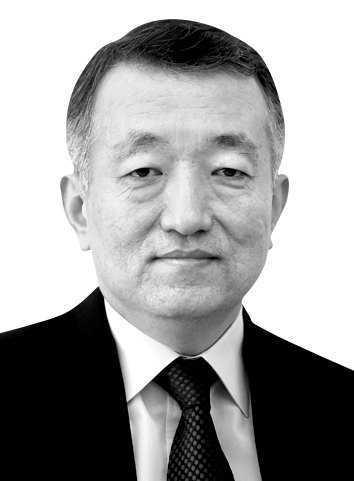A different sort of crisis

The author is a senior editorial writer of the JoongAng llbo.
The 10-year crisis cycle looms. Signs have become prevalent around the world, with few options to solve them. Fiscal ammunition is short, limiting government’s role. Household debt has piled up to 1,862 trillion won ($1.5 trillion) as of the end of 2021. Damage could be huge from bubbly real estate and stock assets. It may take time for a recovery. The Yoon Suk-yeol government could spend the entire presidential term of five years wrestling with economic woes. Economic crisis always deepens wealth disparities. The economy is the biggest problem.
The 1997 crisis stemmed from liquidity woes of inexperienced emerging markets that had just opened up their capital markets. After the crisis of savings and loan associations from a of chain bankruptcies eased, the U.S. Federal Reserve yanked up the interest rate from 3 percent to 6 percent in 1994. Money quickly flew out of emerging markets. Mexico was first to endure a liquidity crisis from a peso meltdown in 1995, the Tequila crisis. The currency crisis swept Latin America and Southeast Asia and in 1997 arrived in Korea. Companies crumbled helplessly.
But Korea fully repaid the International Monetary Fund bailout fund in two years. Growth rebounded dramatically from a contraction of 5.5 percent in 1998 to an 11.3 percent expansion in 1999. The V-shaped recovery owed more to the strong global economy outside the emerging category, rather than internal restructuring and an able economic team.
![Consumer prices in April soared as gas prices jumped by 27.4 percent and diesel prices increased by 37.9 percent in the wake of Russia°Øs invasion of Ukraine. [NEWS1]](https://koreajoongangdaily.joins.com/data/photo/2022/05/24/8757c3c9-d220-48ef-8866-b85e8c9576b3.jpg)
Consumer prices in April soared as gas prices jumped by 27.4 percent and diesel prices increased by 37.9 percent in the wake of Russia°Øs invasion of Ukraine. [NEWS1]
Inflation was manageable in the wake of the global crisis of 2008. Instead, there had been worries of deflation as loose policy failed to jump start the economy. Governments moved in sync in rate cuts and monetary easing. U.S. rates fell from 5.25 percent to 0 to 0.25 percent range in just a year. The Korean central bank lowered the base rate from 5.25 percent to 2.0 percent over five months since the financial crisis. Economic growth of 0.7 percent in 2009 jumped to 6.5 percent in 2010.
But most agree a V-shaped recovery would be difficult in the pandemic crisis wake. Financial crises in the past had been temporary liquidity crunches, whereas current crises stem from global structural problems. The world has enjoyed the low-interest rate binge for too long. Stock prices have risen excessively against their corporate fundamentals. Lush liquidity has sent money funneling into real estate, bonds, metals, energy, luxury products, artwork, cryptocurrencies and speculations. Amid signs of bubbles on the brink of bursting, the Covid-19 pandemic broke out and was followed by the Ukraine war, wreaking havoc on energy, food, raw materials and parts supply chains and triggering runaway prices. Governments are saddled with debt. There are few who are not in trouble.
Stimulus is also out of the question. Rates instead must be raised to contain inflation. The IMF projects annual inflation at 4 percent for Korea, the highest since financial crisis. Workers could demand salary raises in line with rises in consumer prices. The Federation of Korean Trade Unions (FKTU) demands an average 10 percent hike and the Korea Confederation of Trade Unions (KCTU) 8.5 percent. Prices rise further when wages go up as the increases in labor costs are translated into products and services under the so-called wage-push inflation. Former treasury secretary Larry Summers warned rises in wages would further feed inflation.
Companies face a deterioration in profits due to a spike in production costs from higher labor and raw material costs and debt financing costs due to a rise in interest rates. They could resist raising wages and hiring. Layoffs and labor unrest could pan out. The developments resemble the global economy in 1970s under stagflation – economic stagnation coupled with inflation. The United States struggled with inflation and unemployment running above 10 percent. The U.S. inflation last month was 8.3 percent, nearing the 1970 peaks. Korea endured killer inflation with price gains hovering above 20 percent from 1974 to 1981 from two oil crises, with the peak at 28.7 percent. In 1980, economic depression and social unrest followed. Currency and financial crises ended in the following years. But escaping from stagflation could be a more painful and lengthy process.
Yet the world is devoid of strong leadership. The U.S.-led global economy has become multilateral, making it difficult to take command against crisis. Leaders of global powers lack drive, whereas public disgruntlement and distrust are growing. President Emmanuel Macron defended power against left-wing rivals by a small margin in last month’s presidential election. He vowed unity to unhappy voters. This is no time for fighting amongst ourselves. At times of crisis, ideological, gender and class differences cannot matter.










with the Korea JoongAng Daily
To write comments, please log in to one of the accounts.
Standards Board Policy (0/250자)